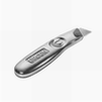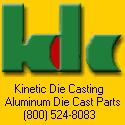Die Casting Tooling Molds. The process known as die casting is mainly used in the metalwork industry to create a great number of parts of the same specifications by forcing molten metal which are under high pressure into molds or …
Continue reading
Tag Archives: die casting tooling
Tooling for Die Casting
Die Casting Tooling. Die casting is a modernization that makes it possible to mass production for manufacturers. It is the procedure of forcing molten metal under high pressure into reusable steel molds. These molds are otherwise dubed dies. It creates multifaceted shapes with high degree of correctness and repeatability.
A die casting tooling is employed for high volume of production and is typically a class “A” complete die. It comes in a variety of sizes and shapes. It is frequently made from steel and often weighs several hundred pounds for a complete mold.
A die casting tooling is utilized to produce a part in a die casting machine. Surfeit aluminium from a die casting tooling is manufactured by a die casting trim, saving as much as 15% in the part price by speeding up the manufacture procedure.
Die casting dies, die casting molds and insert die are also known as die casting tooling. It comes either with single cavity or numerous cavities. If the cavity is soft, it can be damaged and wore off from erosion. It generally needs particular understanding on how to mold tooling for aluminium.
To expand its tooling life, die casting tooling needs heat treatment. Getting a prototype to test and produce a design is prudent because it’s reasonably priced and takes less time to construct. Nevertheless, once damaged, a prototype cannot be customized.
Die casting tooling is a requirement in the manufacturing industry. To get a longer life for the molds, be sure to obtain only from toolmakers that utilizes enough steel. The cost differs for trim dies and cavity inserts.
Kinetic Die Casting manufactures aluminum die castings creating aluminum die casting boxes, aluminum handle hardware, and aerospace die casting. If you would like to get a quote, please visit our website: Kinetic Die Casting Company
Reasons To Buy American Die Casting Parts
Reasons To Buy American Die Casting Parts. American die casting parts are created through the die casting process. Basic die casting consists of injecting molten metal through high pressure under a steel mold called die. Die machines are then used in clamping an aluminum ton which is equal to the amount of allowed pressure needed in exerting the die. The machines used in the die casting process ranges from 400 tons to over 4000 tons. Regardless of size, the fundamental difference between the 2 die casting machines is the process of injecting molten metal to die.
If you based American die parts with parts produced through other processes, you will instantly see the differences. For instance, in American based die casting versus regular plastic molding, the products created in American casting have stronger parts and closer tolerances with greater durability and stability. American based products have stronger resistance and temperature extremes; that is why they are great in electrical projects. If we compare die casting with sand casting, American types produce parts which have thinner walls and closer dimensional areas or limits with smoother surfaces.
Through die casting, production and labor costs are also lowered. Against permanent molding, such a process offers the same advantages with permanent molding. The only difference with permanent molding is again with the costs. If we compare parts made through American based parts with those made through forging and stamping, the parts have more complex shapes, have cast coring holes which are not available through forging or stamping and has reduced assembly time. That is why it is better to acquire American die casting parts based on standard die casting rather than using other methods of production.
This is the blog on the Kinetic Die Casting Company web site. We are an Aluminum Die Casting Company. Look at this website page for more details: www.kineticdiecasting.com/aluminum_die_casting.html. Contact Kinetic Die Casting Company at 818-982-9200 or email us at sales@kineticdc.com. Use this webpage to request “die casting part prices” www.kineticdiecasting.com/replyform.html




